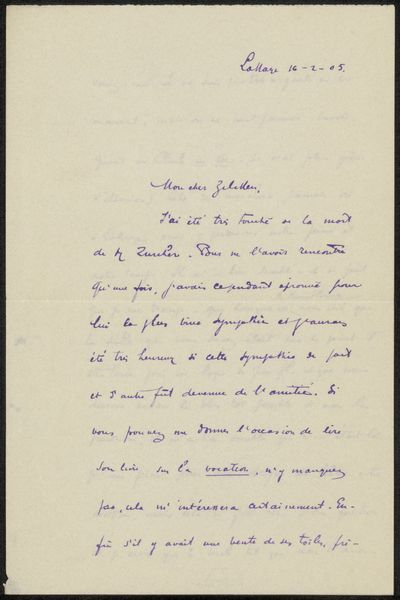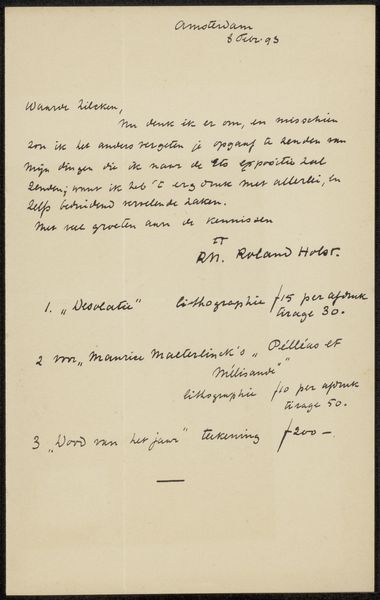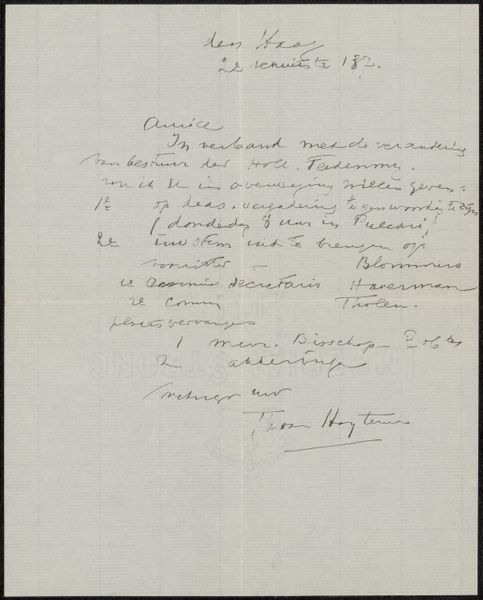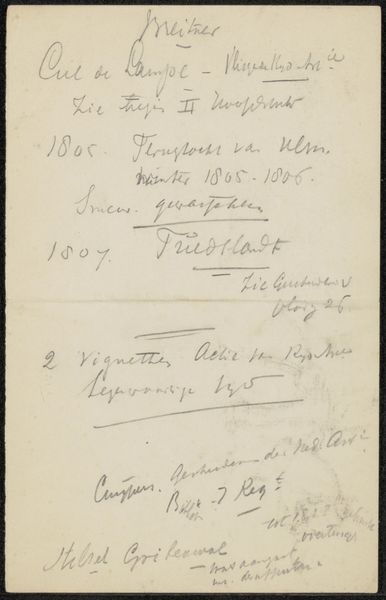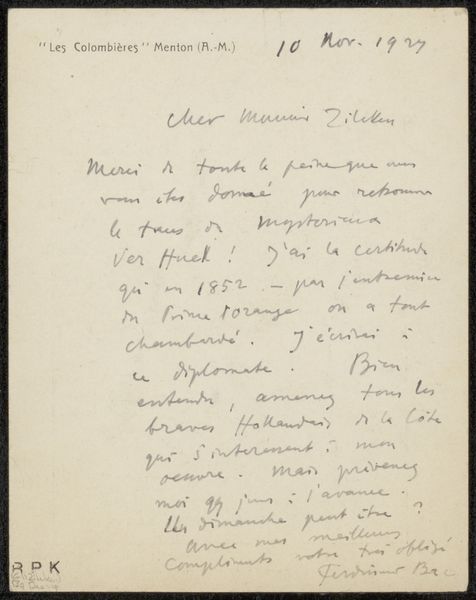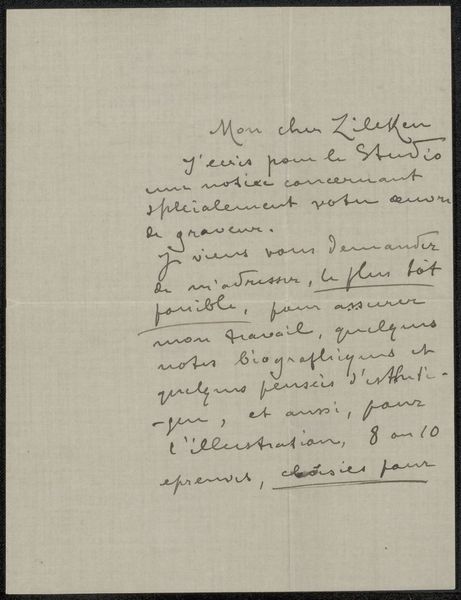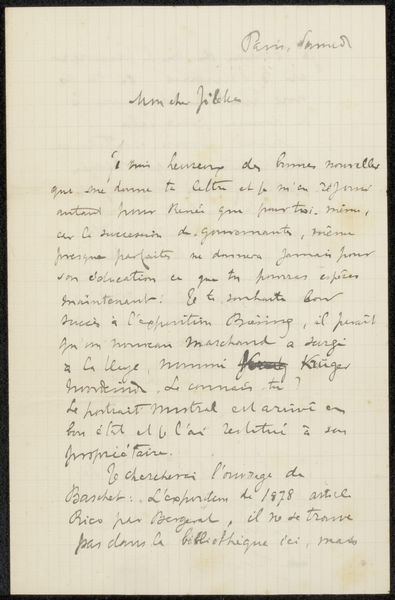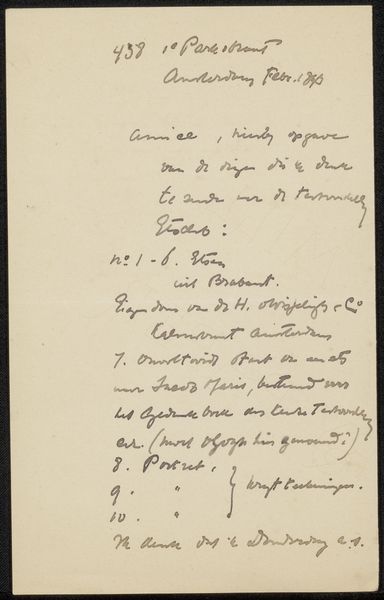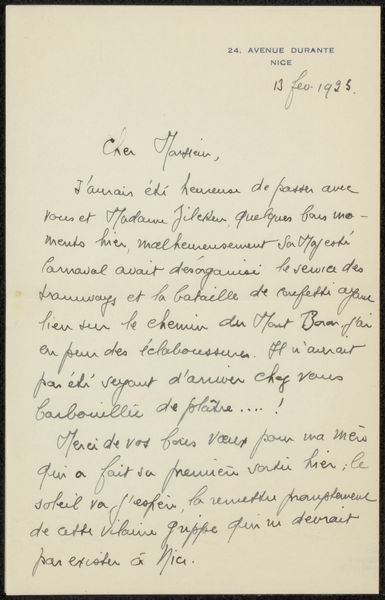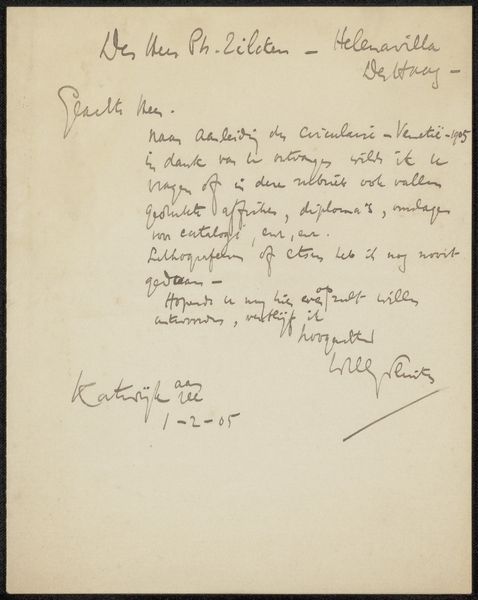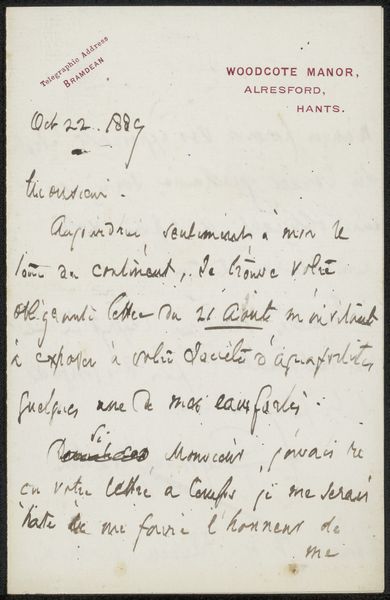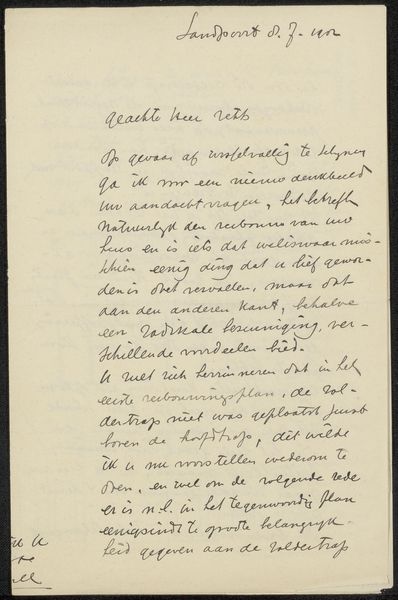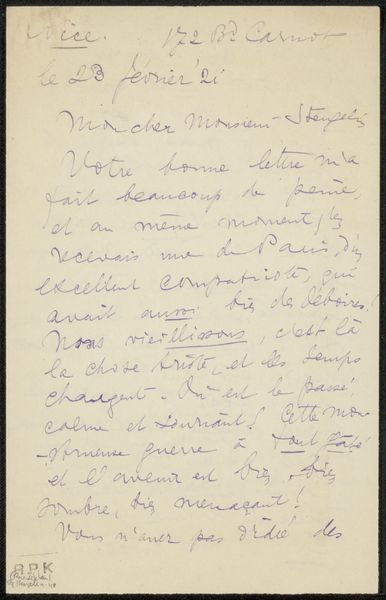
drawing, ink, pen
#
drawing
#
ink
#
pen
Copyright: Rijks Museum: Open Domain
Editor: This is "Brief aan Philip Zilcken," possibly from 1929, made by E. Dreveton, using pen and ink on paper. The elegant cursive gives it an intimate feel, like glimpsing someone's personal correspondence. How do you interpret this work? Curator: The intimacy you describe is crucial. What does it mean to display such an object? This is, on the surface, simply a letter, a communication intended for a specific recipient, and written in French. However, think about what we're actually seeing. Whose story is privileged by its presentation in this gallery? The context transforms a private message into a public statement. Why this letter, from this person, to this recipient? What does it tell us about networks of power, visibility, and even colonialism in the art world of the early 20th century? It demands we consider whose voices and perspectives are traditionally centered and, importantly, those that have been historically marginalized. Editor: I hadn’t considered the power dynamics inherent in its display. Does knowing the social position of the sender and receiver change our reading? Curator: Absolutely. Researching those individuals, and the context surrounding their relationship could potentially open avenues for questioning how such figures exerted authority or shaped cultural landscapes. We have to ask critical questions about whose narratives get preserved and amplified within art historical discourse. Whose letters do *we* get to see? And why? Editor: This letter now feels more like an artifact ripe with socio-political implications. It encourages us to confront issues of access, representation, and the politics of display. Thank you. Curator: Indeed, art offers that space to challenge, reinterpret, and consider the broader impact on how we engage with cultural narratives.
Comments
No comments
Be the first to comment and join the conversation on the ultimate creative platform.
